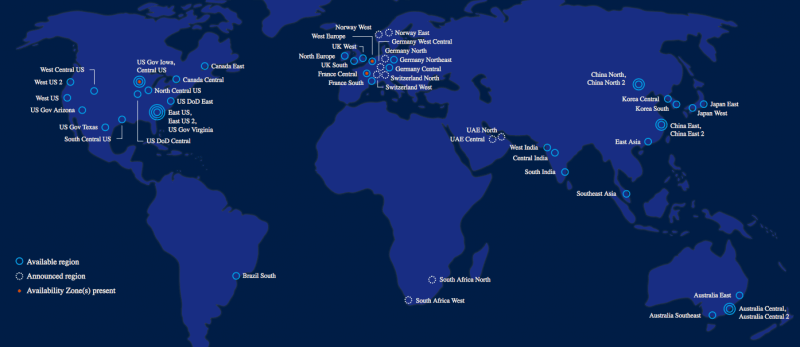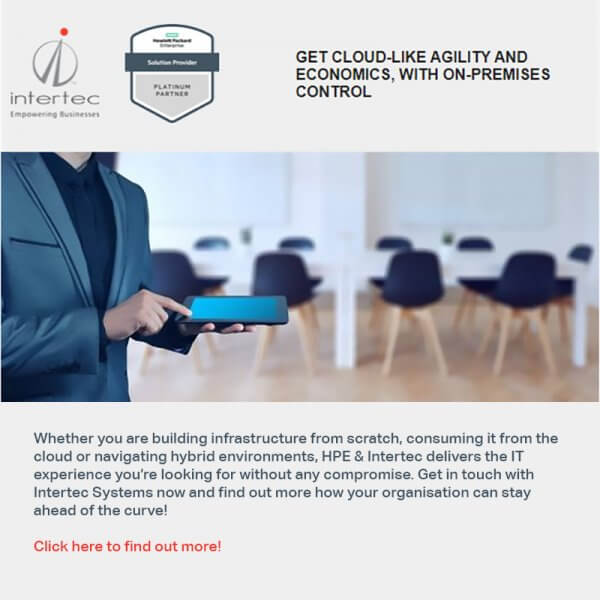Intertec Sytems debunks the myths this market has about adopting cloud technology.

The first and important thing to understand is that this topic is intended for the vast majority of the CIO’s and IT Decision makers who belong to a region of Middle East and Africa (MEA), who have had no direct contact with a locally available Hyper-scale cloud in their country or region or continent before 2019.
2018 was a big year for the MEA region for Microsoft. It announced the availability UAE DC in 2019 and the launch of two more zone in South Africa covering the African market. But the new availability of the DC in the region can mean a lot of different things for a lot of different people. Most importantly what are the key drivers of taking financial decisions for an IT Decision maker especially considering the change in purchase behavior that has been seen in more mature cloud markets all around us i.e. US, Europe or APAC?

Hence, the most important questions remains, why do you really need Cloud? So let’s first state that you don’t need cloud if you don’t know how to consume it. Cloud is a resource, a service and a commodity that can make or break your IT financial management strategy. It is also the new frontier for the industry which is an open struggle for many giants to adopt effectively. It is safe to say that we see a virtual race amongst the top players to create a good value proposition for us to evaluate and present while it’s a struggle for you all to understand and adopt.
Today the largest amount of sales happen on mobile phones, people connect on social media, marketing strategies are driven by data scientists and content is king. So the business in outside your firewall, the customer is not going to walk through the door and your service is not internal. The idea should be a wakeup call for all entities especially when you see how the gap between expectation of your customers and availability and the quality of the service which we are able to deliver today.
How do you further analyze what makes sense for you? How do we clearly understand the risk of adoption or the risk of no adoption? Can you deliver a truly digital experience to your customers while ignoring this digital revolution?
The answer is no, and lets understand why.
Myths to debunk.
1. Cloud is not secure:
While many people want to make a general statement about security rarely few take the time to understand the concepts of security and the implication of cloud. This stems from the basic lack of understanding of cloud. These people are usually talking about a mode-1 (Infrastructure specific movement of VM and Data) adoption strategy and are ignorant about the first most major impact of cloud i.e. the SaaS movement.
Delivery of Software as SaaS via secure APIs and opex model availability is the highest grossing revenue shift in this vertical and it’s not going back. This SaaS movement is a huge game changer for the industry. Early adopters have already started to dethrone legacy players and creates a 40% impact on the Operational budgets of these vendors which translates into lower licenses cost and that too on Opex which helps in proliferating the sales and service adoption.
While this is a large topic in its own, which I promise to cover in my very next article its safe to say that SaaS is here to stay and with that all your IT is going to be powered by SaaS services and not perpetual software and you may not have a say in that decision.
Coming back to the Mode 1 adoption of cloud. All the companies who are providing IaaS, PaaS or IPaaS solutions today are doing so at their OWN risk. One large security breach in these DCs can spell doom for them and a loss of more than half a trillion for each global provider because that makes their product immediately. So their security is their lifeline. So it is well know that companies like Microsoft and IBM have invested millions in protecting their own infrastructure and it is secure enough to host dedicated architecture for government and defense bodies in the US and replicated by many around the world.
So why is Cloud not secure? Because the security is limited to the Infrastructure supporting the VM whereas the application hosted is managed by you and the VM is managed by you and many people assume that this will be secure by the provider. Let’s draw a parallel to this in todays practice. If you by a Server from IBM, do you expect IBM to manage and secure the application hosted on top of it? The answer is no and hence it is the same with the Cloud vendor of choice the only difference is that you now have a VM Available to you by the Hour and that is no different to having a VM available with you for 3-5 years on a private cloud on an internal Hardware Infrastructure.
The major concern was not Data Security rather Data Sovereignty. “Data Sovereignty is the idea that data are subject to the laws and governance structures within the nation it is collected.” This is the real reason as to why we have this huge area of MEA which has such a low cloud adoption. Governments, Banks, Insurance and Healthcare organizations had no choice but to invest in physical infrastructure. Legally these entities deal in services and their agreements need enforcement of local laws. Without this power of enforcement of local laws they could not provide their service but this is a terminal change to this problem at least for customers in UAE, Bahrain and South Africa as these countries will be enforce their federal laws to the data that resides within UAE even if it sits within Azure or Amazon.
While there are solutions which circumvented these issues, no application would have supported high levels of latency that was available to the neared DC, and now with that even the most secure organizations can now start using the public cloud eco-system.
2. Cloud is a tool to save costs and we have enough money to buy infrastructure
Yes and no. Cloud is a tool to save costs but it definitely is not a replacement for Private cloud and the same is true vice-versa. Public cloud and private cloud have its own functions within an eco-system. Till date entities in the Dark Zone as we can call it had no choice but to use archaic methodologies and blind assumptions to create a consumption strategy which resulted in extra-large infrastructure farms which 80% provisioning and less than 20% consumption. This mind you is not an exorbitant number and I have seen worse in a 100% provisioned environment.
Having surplus capex funds in today’s market is a luxury. Second infrastructure investment are ranked among the lowest priorities around the region as the pressure to develop new services grow and innovation is the need of the hour. With all the money in the world only 2 entities have been able to match the hyper-scale capabilities that could match versus Amazons Elastic compute capabilities. So have surplus capex is not a solutions.
Solutions like mobile apps, e-commerce, big data etc. require an elastic platform and that is a topic to be covered in another article in details (topic 3) but it is the demand of this customer expectation that makes this shift to public cloud a necessity
All the Capex you can save today will only allow for you to run multiple innovation centric projects for tomorrow. Blind investment into private cloud eco-system today could have very adverse effects on your go to market and competitive placement.
3. I can switch to cloud easily without any ground work or assessment
This is a recipe to disaster and in my view the biggest mistake for a company. While slow movement can reduce your growth trajectory a wrong cloud strategy can actually increase your costs. While the concept of vCPU, RAM, Storage Capacity and Performance in the Cloud are exactly same as a private cloud the variables concept of Bandwidth and storage consumption are completely unique to every provider.
Your assumption that I can do a lift and shift motion to cloud when the time is right can result in extreme overage charges which create a negative impact on you and to the brand of cloud overall as you will end up being a bad reference for them.
Cloud movement requires careful consideration and an acknowledgement that every eco-system is different. Every hybrid cloud will vary on the percentage of infrastructure that could be split between public, private, collocation and DevOps. While BaaS and DRaaS solutions can be easy movements to cloud but when you expose your applications on a Public VM then there needs to a sense of understand between the provider, the channel and you as to what are going to be factors that could affect your subscription financially.
Many a times your legacy application stack may not be compatible to the cloud native services on public cloud. Hence migration to cloud is not a ready solution that can help you reduce Capex immediately. This requires a strategic roadmap and a clear transformation strategy for your IT, which shows a clear ROI and a manageable overage.





